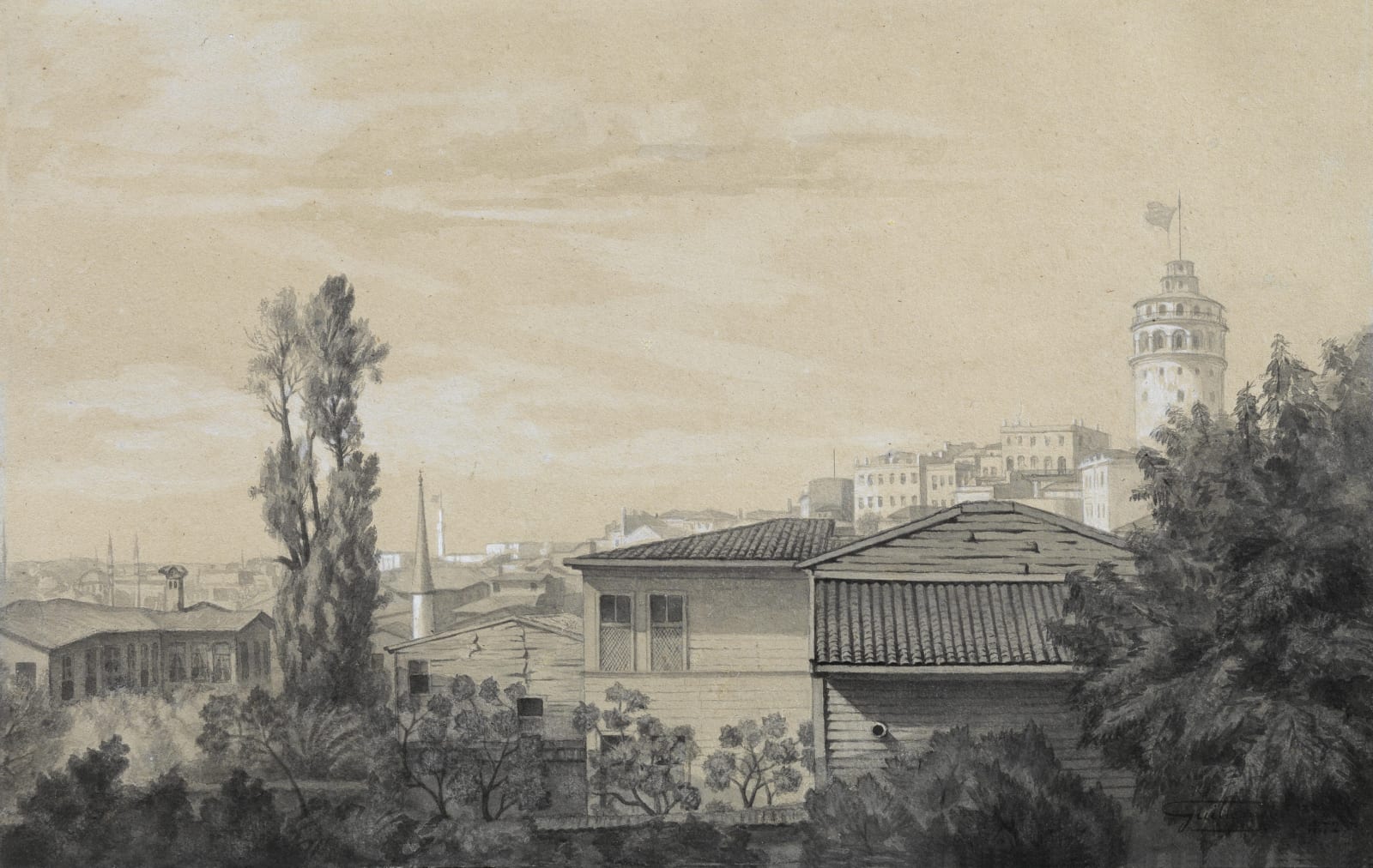Jean-Baptiste Antoine GUILLEMET 1843-1918
This watercolour depicts the northern part of the old city of Istanbul – or Constantinople, as it was still known in the 19th century – dominated by the medieval Galata Tower.
The monochrome watercolour, which relies for effect on its nuanced shades of brown, conveys an image of the old Ottoman capital that is at once intimate and monumental. In the foreground, beyond a curtain of trees, we see several typical Turkish wooden houses with their characteristic bay windows. On the right, dominating the scene, stands the Galata Tower, built in 1348 by order of Rosso Doria, the first governor of the Genoese colony that had settled in the eponymous neighbourhood of Constantinople.
The Genoese held a fortified colony in this area, set on a rise in a strategic position overlooking the Golden Horn below, from 1273 to 1453. We can make out a number of 19th century buildings at the base of the Tower, while minarets loom over the houses in the centre of the composition.
The watercolour's unique value lies in its date, "1872", thus showing the Tower as it looked in that year, because only a few years later, in 1875, its roof was destroyed in a violent storm and was rebuilt with the conical shape that we see today.
The Tower has come down to us today virtually intact save for a few changes, the most far-reaching of which were made following the raging storm that destroyed its roof in 1875. As we can see from the watercolour, the roof was very different in shape from the conical form it displays today.
JOIN OUR MAILING LIST
Subscribe to our mailing list in order to receive news on new acquisitions, exhibitions, special previews and more!
* denotes required fields
We will process the personal data you have supplied to communicate with you in accordance with our Privacy Policy. You can unsubscribe or change your preferences at any time by clicking the link in our emails.
